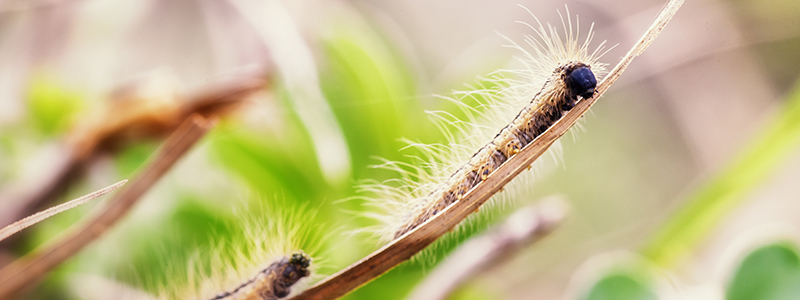How to identify OPM

The caterpillars have black heads and grey bodies covered in long white hairs.
The caterpillars are only about 2mm long when they emerge in Spring, and tend to remain high in the trees until they are older and larger. When they reach 1cm long they develop the irritating hairs. They are fully grown at 2cm long.
They usually move nose-to-tail in a procession, hence their name. You may be able to see them on all parts of the tree - on the trunk, branches and leaves, and occasionally on the ground.
Nests
Nests are usually found in early summer, in the trunks and branches of oak trees. A tree or branch can contain many nests. They can appear at any height - from the ground to the top of the tree.
You are unlikely to find nests on any other tree or shrub species, fences, walls or other similar structures (apart from structures supporting the tree).
They are typically domed or teardrop-shaped, and range from the size of a golf ball to a rugby ball. When fresh, the nests are white with white silken trails made by the caterpillars along the branches and leaves. But the nests soon become discoloured and brown, making them harder to spot.
Nests stay attached to the tree for many months after the adult moths have emerged.
This form helps us improve the content and structure of our webpages only, and we cannot provide a response to any submission below.
Get in touch with customer services
The quickest way to contact us is by using our online forms which are available 24 hours a day, 7 days a week. If you need to speak to us give us a call during office hours and talk to our Customer Services team who will be happy to help.

